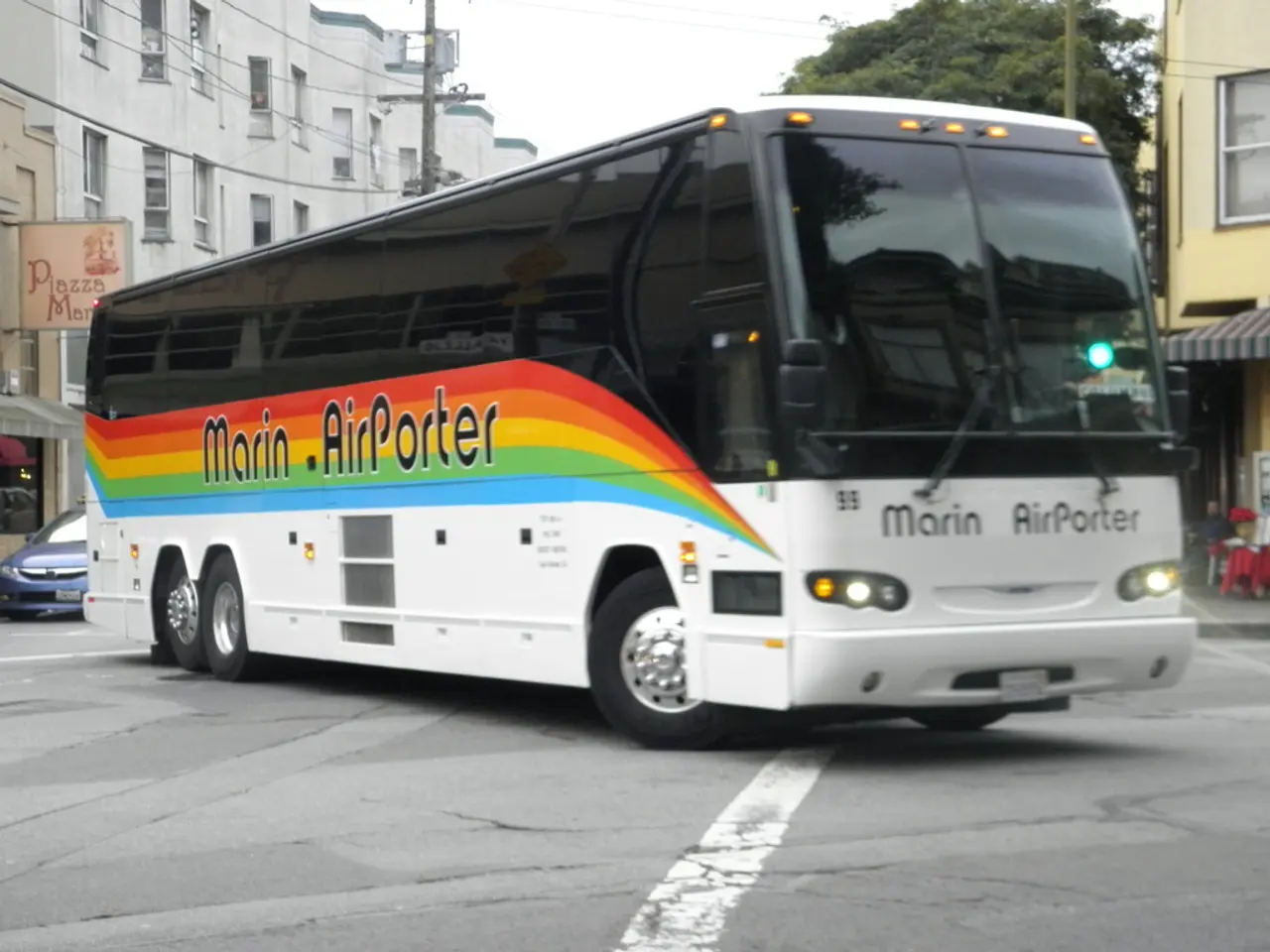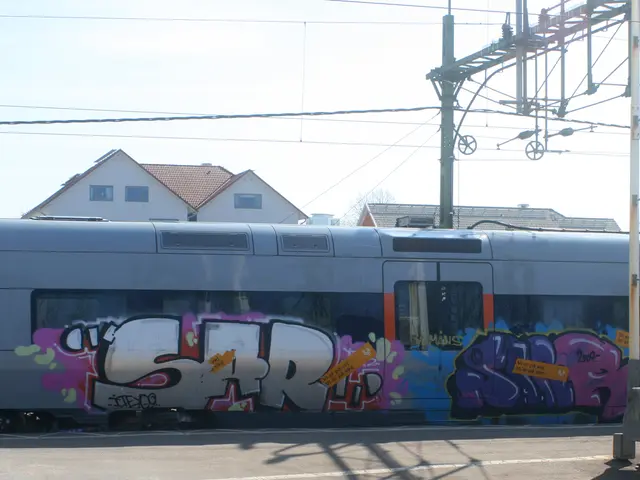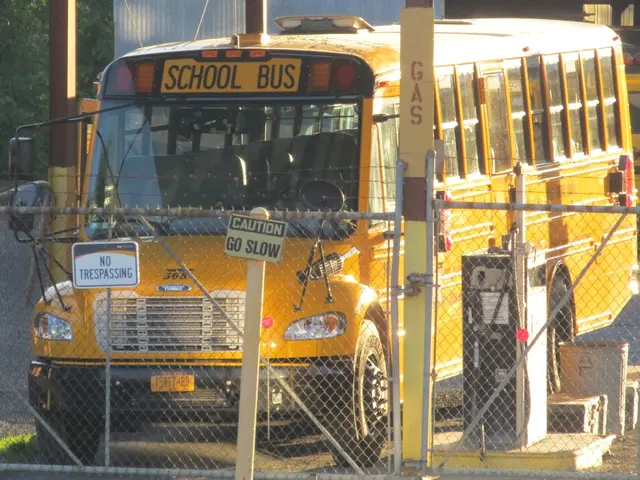Glasgow to initiate AI-guided bus priority system for potential efficiency enhancement
Glasgow Trials AI Technology to Enhance Public Transport
In a significant move towards creating a better, quicker, and more reliable bus network, Glasgow is set to trial the use of artificial intelligence (AI) technology. The announcement was made by Jim Fairlie, Connectivity Minister, who expressed his pleasure in supporting Glasgow City Council with nearly £1.3 million from the Scottish Government's Bus Infrastructure Fund (BIF).
Councillor Angus Millar, city convener for transport and climate, hailed this investment as an important step towards creating a more sustainable and attractive public transport system in Glasgow. He emphasized that the shift away from cars and towards more sustainable bus services will make public transport a more accessible option for more people.
The AI-powered traffic signals trial on Pollokshaws Road aims to explore how new technologies can deliver improvements for bus passengers and make traveling by bus an easier option for more people. Smart signals at over 20 junctions will use real-time and historical data to prioritize buses and reduce delays.
The trial is funded with £1.27 million from the Scottish Government's BIF. It builds on a smaller-scale trial conducted last year which delivered journey time reductions of up to 50%. The hope is that other road users in the area will also benefit as the AI works to ease congestion and improve the flow of traffic.
In addition to Pollokshaws Road, the grant will also help fund design work for other infrastructural projects in the city. These include the Pollokshaws Road bus corridor and the Paisley Road West bus and active travel corridor. Hope Street, one of the city's busiest interchange points, will undergo a series of improvements such as widening pavements, modernizing junctions, improving pedestrian crossings, and upgrading bus shelters and real-time passenger information.
George Hazel, chairman of Glasgow City Region Bus Partnership, emphasized that for many people across the city region, bus travel is essential. He stated that investing in smarter, more efficient bus infrastructure helps create a fairer, greener transport system.
The wider BIF was awarded £20 million in 2025-26. The funding will support design work for several major infrastructure projects, including two key bus corridors and improvements to Hope Street.
While the name of the person leading the project on the use of AI technology in Glasgow remains unclear, Jim Fairlie visited Glasgow's operations center at Eastgate to learn about the transformational impact that artificial intelligence and machine learning will bring to bus prioritization across the city.
In conclusion, Glasgow's trial of AI technology marks an exciting step forward in the city's commitment to creating a more efficient and sustainable public transport system. The investment aims to improve bus infrastructure and speed up bus journeys, making buses more attractive for people working, living in, or visiting Glasgow.
Read also:
- User Data Analysis on Epic Games Store
- Rachel Reeves conducts a discussion with Scott Bessent and financial executives, focusing on investment matters
- Strategic approach to eco-friendly nickel production for electric vehicles in Europe
- Week 39/24 Highlights: Tesla CEO's visit, Robo-taxi buzz, Full Self-Driving study, Affordable electric cars, and European pricing less than €30,000








